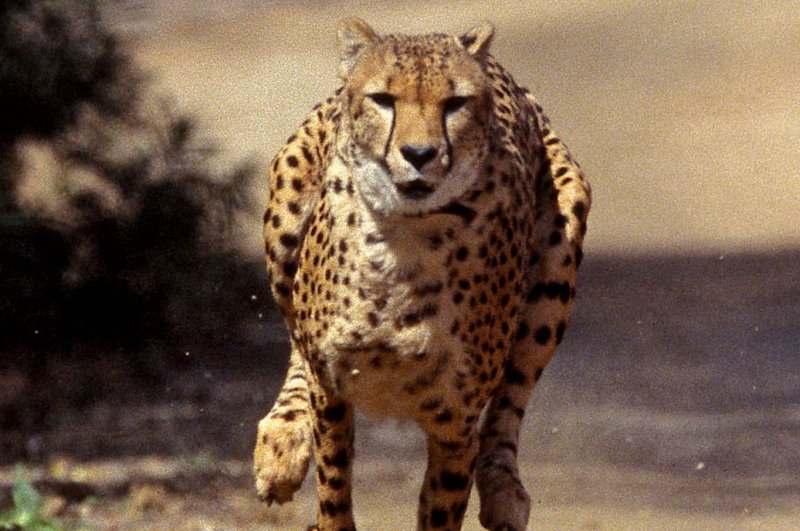A 2-year-old male African cheetah exhibits lightning speed at the San Diego Zoo's Wild Animal Park. Photo by Ken Bohn/San Diego Zoo |
License Photo
Feb. 2 (UPI) -- To hunt successfully, cheetahs must keep their head still and eyes focused on the movements of their prey while running at high speed. How does the fastest animal in the world do it?
New research suggests the feline's inner ear is specially-designed to maintain balance and visual focus while running at speeds upwards of 60 miles per hour.
"If you watch a cheetah run in slow motion, you'll see incredible feats of movement: its legs, its back, its muscles all move with such coordinated power," Camille Grohé, a research fellow at the American Museum of Natural History, said in a news release. "But its head hardly moves at all."
In mammals, the inner ear plays an important role in balance and orientation. For the cheetah, the inner ear must preform these essential functions at high-speeds.
"Until now, no one has investigated the inner ear's role in this incredible hunting specialization," Grohé said.
The mammalian inner ear features three interconnected semicircular canals, each with fluid and sensory hairs that perceive even the slightest movements of the head. Each canal is oriented at a unique angle to detect different directional motions: vertical, horizontal and side-to-side tilt.
To understand how cheetahs evolved a unique iteration of the inner ear, scientists used high-resolution X-ray computed tomography to image semicircular canals in the skulls of modern cheetahs, Acinonyx jubatus, and a close relative, Acinonyx pardinensis, which went extinct 126,000 years ago. The images helped scientists build 3D digital images of the two species' inner ear.
Scientists found the inner ear of modern cheetahs boasts greater volume that the inner ear of other modern felines. Their anterior and posterior semicircular canals are both longer.
"This distinctive inner ear anatomy reflects enhanced sensitivity and more rapid responses to head motions, explaining the cheetah's extraordinary ability to maintain visual stability and to keep their gaze locked in on prey even during incredibly high-speed hunting," said John Flynn, curator of mammalian fossils at the museum.
Acinonyx pardinensis was also without a more voluminous inner ear, suggesting the cheetah's vestibular system is modern specialization.
Researchers published their findings in the journal Scientific Reports.















